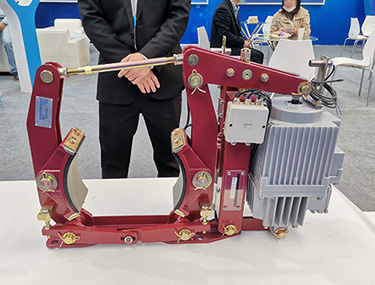Crane wheels are key walking parts of bridge cranes and gantry cranes, which directly affect the operating stability, load-bearing capacity and service life of the equipment. The following is a detailed description of these two types of crane wheels:
1. Bridge crane wheels
Features:
Track type: Usually runs on I-beam or box beam tracks, and the wheel tread shape needs to match the track (such as flat tread, conical or cylindrical).
Crane wheel pressure distribution: The wheels are distributed on the end beams on both sides of the crane, and the weight of the main beam and the lifting load must be balanced.
Drive mode: The driving wheel (driving wheel) is combined with the driven wheel, and the wheel is driven to rotate through the motor and reducer.
Technical requirements:
Material: high-strength cast steel (such as ZG340-640) or alloy steel (such as 42CrMo), with a surface quenching hardness of HRC45-55.
Flange design: single flange (anti-derailment) or double flange (high-precision track), the flange height is usually 20-30mm.
Bearing configuration: Use spherical roller bearings or tapered roller bearings to adapt to track installation errors.
Common problems:
Uneven tracks cause wheel rim wear;
Overload causes wheel tread peeling or cracking;
Installation deviation causes "track gnawing" phenomenon.
2. Gantry crane wheels
Features:
Track type: P-type steel rails or QU-type crane-specific rails laid on the ground, and the wheels need to adapt to the outdoor environment (such as corrosion resistance and dust prevention).
Crane wheel set layout: It can be divided into four-wheel, eight-wheel or multi-wheel sets according to the span, and the load is evenly distributed through the balance beam.
Trolley travel: Usually all wheels are driven (such as variable frequency speed regulation), and windproof and anti-skid design is required for outdoor use.
Technical requirements:
Fatigue resistance: Dynamic loads are frequent, and high-toughness materials (such as forged steel) are required.
Anti-skid: The wheel tread can be added with anti-skid patterns or high-friction coefficient materials.
Maintenance convenience: The outdoor environment requires a sealed lubrication system to reduce the frequency of maintenance.
General selection and maintenance points
Selection parameters:
Crane wheel diameter (Φ200-800mm common) and rated wheel pressure (usually ≤1.5 times the allowable wheel pressure);
Crane wheel working level (such as M4-M7 corresponding to different life requirements).
Maintenance suggestions:
Regularly check wheel tread wear (wear measurement ≤2mm per month);
Lubricate bearings (replace grease every 3-6 months);
Correct track parallelism (within tolerance ±3mm).
Troubleshooting:
Rail gnawing: adjust the track span or wheel horizontal deflection;
Abnormal noise: check bearing damage or bolt loosening.
Through reasonable selection and maintenance, crane wheels can significantly improve equipment safety and extend service life. In practical applications, the design acceptance needs to be combined with GB/T 10183 and other standards.




